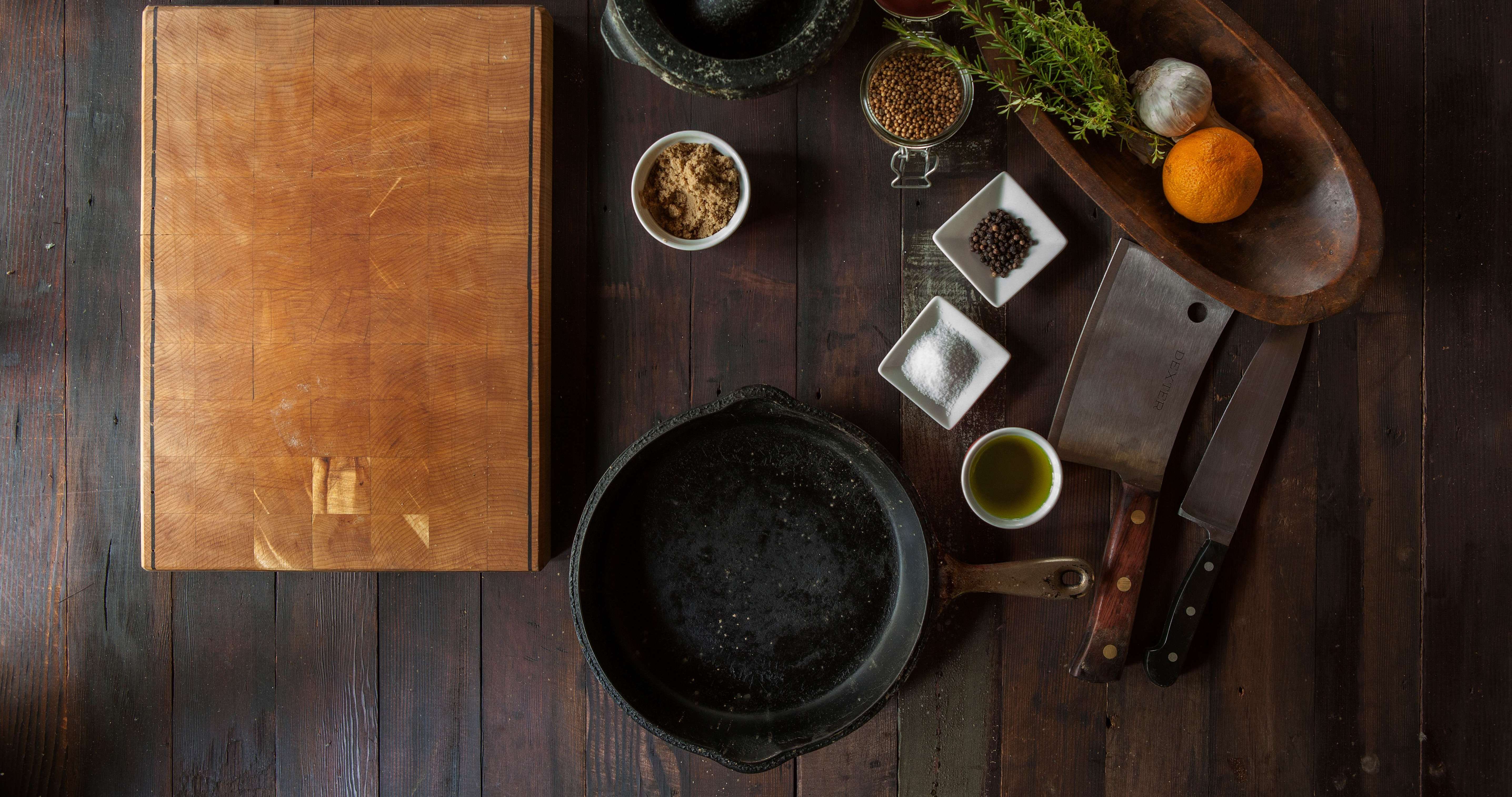Jump Ahead To:
I have an extra full pantry because I have issues about food. (It’s a long story). So, I was really challenged when I had to long-distance move to a new home and deal with the food. What to do with all that perishable food, the canned goods, the stash of frozen food and half-used cereals? And then how to feel good as I shrank my food items?
I had to come up with a plan. Here’s what I did. My friends at Bellhop Movers asked me to write this because they thought you may feel the same.
Create a Food Moving Plan
Your goal is to pack and move as little as possible to carry to your new home. Why you ask?
- The perishable food items may spoil and become hazardous.
- The weight of food items adds to moving costs.
- It can be time-consuming and expensive to deal with (lots of extra wrapping to do, plus cardboard and packing supplies).
- Some of the items are probably long-expired anyway.
Food Moving Strategies
Start early. It’s natural to procrastinate, particularly if you love your home ‘as is.’
Involve the Family and Best Friends: There is no rule that says one person must do it all. Kids can help find expired expiration dates on canned goods and cereal; turn it into a treasure hunt with a reward. Maybe offer a reward for each expired item found. Even small kids can learn to read the expiration dates. Invite friends over to help, but only the ones who can talk while working.
Plan it: If you have 8 sets of cabinets, plan to stretch it out. Tackle one at a time. Take on the canned goods, or condiments, or cereal. Maybe whittle down the empty glass bottles.
Show It: Mark your progress around the kitchen with removable painter’s tape on the cabinets. Write notes on it. That tape gave me a sense of progress.
Break the big scary task down into micro-projects that can be handled in one or two hours. This helps with the inevitable panic that can come.
Learn from it: Looking at a pile of food waste like expired cereals, canned food may make you a better shopper and remind your family about food waste. We all adopted new habits during Covid. Maybe it’s time to drop some.

Seven Tips on What to Do with Food When Moving
1. Pre-Move – Break Old Food-Buying Habits
Stop Buying ‘Extra’ Food – Months before the Move
If you have two months of extra food in your pantry for that rainy day emergency like I did, stop buying two months before the moving date.
Breaking this routine is hard.
Stopping shopping it is harder than it sounds. But you have to. Use the extra time gained on the move or your family. Remember, this is temporary.
Don’t be tempted by discounts. Stop thinking about the sale items. Forget about food for that rainy day. Stop stocking up.
Buy Only the ‘Easy’ Perishables
Switch the buying to a one-week horizon. The ‘usual’ suspects like milk and eggs, vegetables.
2. Keep Food Traditions Alive
Your family is likely to be stressed, kids particularly. Keep food routines going to show that life is going to be the same. Saturday mornings, my young daughters and I made pancakes together. We kept it up during the clean out, and it was what we made the first Saturday in our new home.
3. Use Up Your Perishables Before the Move
You can’t take perishables with you. The only real exception is a very short local move when frozen food items can be kept tightly sealed in an ice chest you carry in your car. Local food banks cannot accept frozen food.
Eat up what you have. Be like a bear in hibernation.
Find new recipes for what you have.
Engage the family. If they complain about the same old recipe, challenge them to use online apps to find new ways those pantry items. Apps like Supercook.com and My Fridge Food.
Limit Takeout Food
If Friday night was takeout night, think about cooking at home. Negotiate an extra night out after the move to get to know the new town.
4. Share. Throw a Party
Your friends will miss you. Throw a great dinner. Burgers and paper plates. Thank them. Make your ‘famous’ dishes. Maybe bake a pre-birthday cake for all the birthdays you’ll miss. Don’t make wild promises.
5. Give Away and Donate
You probably hate food waste as much as I do. Why not take them with me, you ask? Again, it’s worth repeating the three reasons.
- Each item must be handled (wrapped if in glass).
- They add to the cost of the move.
- Each item must be handled again at unpacking. (You may well be exhausted of unpacking by then; so, less is better.)
Food banks and other non-profit organizations cannot knowingly accept opened perishable food items. Set unopened items aside for donation.
Your moving company may be able to handle the donation drop-off for you. Many movers support Move for Hunger and can transport your donation free of charge.
Your friends may be glad to take that half-used box of oatmeal or other food items because they know you. This can be a bit risky. Maybe instead, bake up some oatmeal cookies and gift them.
Check your church, shelter or non-profit food bank. They may have food donation plans that meet local health requirements. For example if you cook up your food in their kitchen.
6. Recycle and Trash
Those outdated (expired) glass bottles of salad dressing and olive oil should go. Maybe all those little jars of spices. Rinse glass and recycle. Don’t argue with expiration dates.
7. Stock up on regional favorites you may not find in your new location
Buy and pack all-new items. Check the expirations too to keep from going crazy.
How to Pack Food for Moving | Tips
Your moving quote may include wrapping and packing. (Bellhop will be glad to provide a free moving quote). If so, you want to dispose of the perishable items before so the professional movers can be fast (and charge less).
Have pantry items separated for faster handling by the professional movers. We used painter’s tape on our countertops and cabinet shelves to separate spices and condiments from cereals and dry goods. Fragile items were separated too. This tape system eliminated questions and sped things up when packing.
Be sure to have extra supplies handy too. Packing paper, ziplock bags, bubble wrap, special cardboard boxes.
Put heavy items in small boxes: glass bottles of olive oil, glass jars and canned goods. Have a supply of carboard boxes handy, particularly small boxes for heavy glass containers.
Wrap glass bottles in bubble wrap.
Package dry goods like flour and sugar in sealable plastic bags.
Package likes with likes in the same box. Spices with spices, condiments with condiments. Don’t mix. It just makes unpacking more challenging.
Use blue painter’s tape to firmly seal cereals and other dry food goods like bags of walnuts or dried cranberries.
Label and number each cardboard box clearly. Or take a picture with your phone of the items in each box as you fill it. Mark the room name, summarize the contents, and number. Write on top and one side.
Create a packing list showing what’s in each box. Or create a shared photo album of all the photos everyone can reference.
With a longer-term moving plan, add disposable stuff to the weekly garbage pick up to whittle down the stuff going to the dump. This keeps costs down and frees up space to deal with the other items. Just seeing the pile will make you feel like you are making progress.
Have a Code: Blue painter’s tape sealing a box meant stuff could still be added. The clear professional movers wrapping tape meant the box was final-packed.
On Moving Day
Be kind to yourself. Maybe this is the time to get take-out food for you and the movers. Maybe drink less coffee. Drink more water with electrolytes. Now is the time to have recyclable plastic water bottles handy.
Calm the pets as best you can. Say goodbye to your vet, arrange to get the pet records, and maybe some calming meds.
Don’t forget to wheel out the trash bins as the final act!
Say Goodbye to the House: Gather everyone for a brief walkthrough and ceremony. Remember something memorable that happened. This place sheltered you, gave you room to grow.
During the Move
Cope, calm and stay hydrated. Now is the time for indulging in everyone’s favorite energy bars. If traveling with pets, remember their foods and allow for potty stops. If carrying perishable food in a sealed ice chest, this should be the first item unpacked.

After the move
Unpack the kitchen soon.
Make it a priority. Cook something. Fill the house with aromas of your families favorite meals. Paper plates, burgers on the grill will be ok. So much of our lives centers around food and food rituals. If the kids are used to cocoa at night, have it ready.
Thank the Movers!
The move can be stressful on them too.
Celebrate!
Congratulations you and your family have survived one of the biggest stressful life events imaginable. If you planned a special event like a cruise or trip to DIsneyland, you’ve earned it.
Meet the neighbors.
They will be curious.
Create new rituals and routines.
Before recreating old routines maybe try some new ones
Need More Help or Tips?
At Bellhop, there’s nothing we want more than for our customers to have a smooth move. We hope this article on how to pack food for the move saves you some time and worry. If you’re ready to get moving, their local and long-distance movers can be there in a jiffy. Give them a call, even if it’s just to ask how to pack olive oil. They can also tell you what packing supplies they carry and offer recommendations.
Bellhop offers a comprehensive set of articles on moving with tips and advice so you don’t have to reinvent how to move alone. Some are practical with titles like: When Should You Start Packing to Move? and THE Moving Checklist What to Check Off When You’re Moving. Others recognize the stress of the moment: Why Moving is So Stressful (And 3 Things You Can Do About It).
- How to Pack Lamps for Moving - July 15, 2024
- How to Pack Chairs for Moving - July 9, 2024
- Best Moving Companies in Atlanta - June 26, 2024




